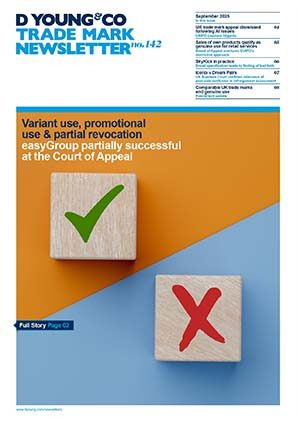No room for reciprocity where generosity reigns: EU member states may not apply reciprocity principle
In this decision, the Court of Justice of the European Union (CJEU) ruled that European Union (EU) copyright laws prevent EU member states from implementing the Berne Convention’s reciprocity test for works of applied art. As a result, the copyright protection for such works originating from other countries does not depend on the law in the originating country.
Background of the case
Vitra Collections AG (Vitra) is the licensee of various chairs designed by Ray and Charles Eames, including the Dining Sidechair Wood. Ray and Charles Eames were citizens of the USA, where they first displayed the Dining Sidechair Wood in 1950. Vitra saw the copyright to the Dining Sidechair Wood infringed by a chair distributed by the chain of shops of Kwantum Nederland BV and Kwantum België BV (Kwantum).
Vitra’s claims were dismissed at first instance. The Court of Appeal in The Hague found infringement of Vitra’s copyright. On further appeal, the Supreme Court of the Netherlands found it necessary to have the CJEU clarify the applicability and scope of the reciprocity rule of the Berne Convention.
Copyright protection in the EU
The Berne Convention is an international treaty that implements basic principles and minimum standards regarding the protection of works and the rights of their authors. EU member states but not the EU are members to the Berne Convention. The EU however committed to comply with it through other treaties. The three basic principles of the Berne Convention are:
- National treatment (works originating in one of the Berne Convention contracting states are given the same protection in each of the other contracting states as granted to its own nationals).
- Automatic protection (no formality requirement).
- Independence of protection (protection independent of the existence of protection in the country of origin).
As an exception from those principles, for works of applied art, contracting states may make copyright protection dependent on protection in the originating state (reciprocity rule).
In EU legislation, the copyright protection of “works” is laid down in the Directive 2001/29/EC (InfoSoc Directive), which is transposed into national laws of EU member states. The directive aims at a high level of protection as a basis. It neither distinguishes between the origin of works, nor does it provide specific rules for works of applied art.
Referral questions
In the Vitra v Kwantum case, the Court of Appeal in The Hague held that the reciprocity rule does not prevent copyright protection of the Dining Sidechair Wood because works of applied art are not generally excluded from copyrightability in the USA. Kwantum argued that it has to be considered that the Dining Sidechair Wood specifically was not subject to copyright in the USA.
The questions referred to the CJEU, in summary, ask whether the case fell within the scope of EU law; whether EU law precluded EU member states from applying the reciprocity rule; and whether it made a difference if a state joined the Berne Convention prior to joining the EU.
CJEU answers
The CJEU held that the case is subject matter of EU law because the InfoSoc Directive may apply. The relevant provisions cover works of applied art, regardless of their origin. Applying the reciprocity rule would thus contravene the directive’s wording and undermine its objective, namely the harmonisation of copyright law and a high standard of protection. Since the reciprocity rule is not a binding rule for member states, the fact that a state may have joined the Berne Convention before joining the EU does not justify its application.
In short
EU courts will no longer assess if works of applied art are protected in other countries. Rather, they will need to assess if copyright protection exists under the relevant national and EU laws, making enforcement less burdensome. Yet many questions remain. There are currently two CJEU cases pending, seeking clarity, inter alia, regarding the threshold for protection of works of applied art, the scope of protection, and the relevance of the subjective view of the creator (cases C-580/23 and C-795/23).
Case details at a glance
Jurisdiction: European Union
Decision level: CJEU
Parties: Vitra Collections AG v Kwantum Nederland BV et al
Citation: C-227/23
Date: 24 October 2024
Decision: dycip.com/c-227-23
Useful links
European Commission, EU copyright legislation: dycip.com/ec-copyright-legislation
WIPO, Summary of the Berne Convention for the Protection of Literary and Artistic Works (1886): dycip.com/wipo-berne-convention
